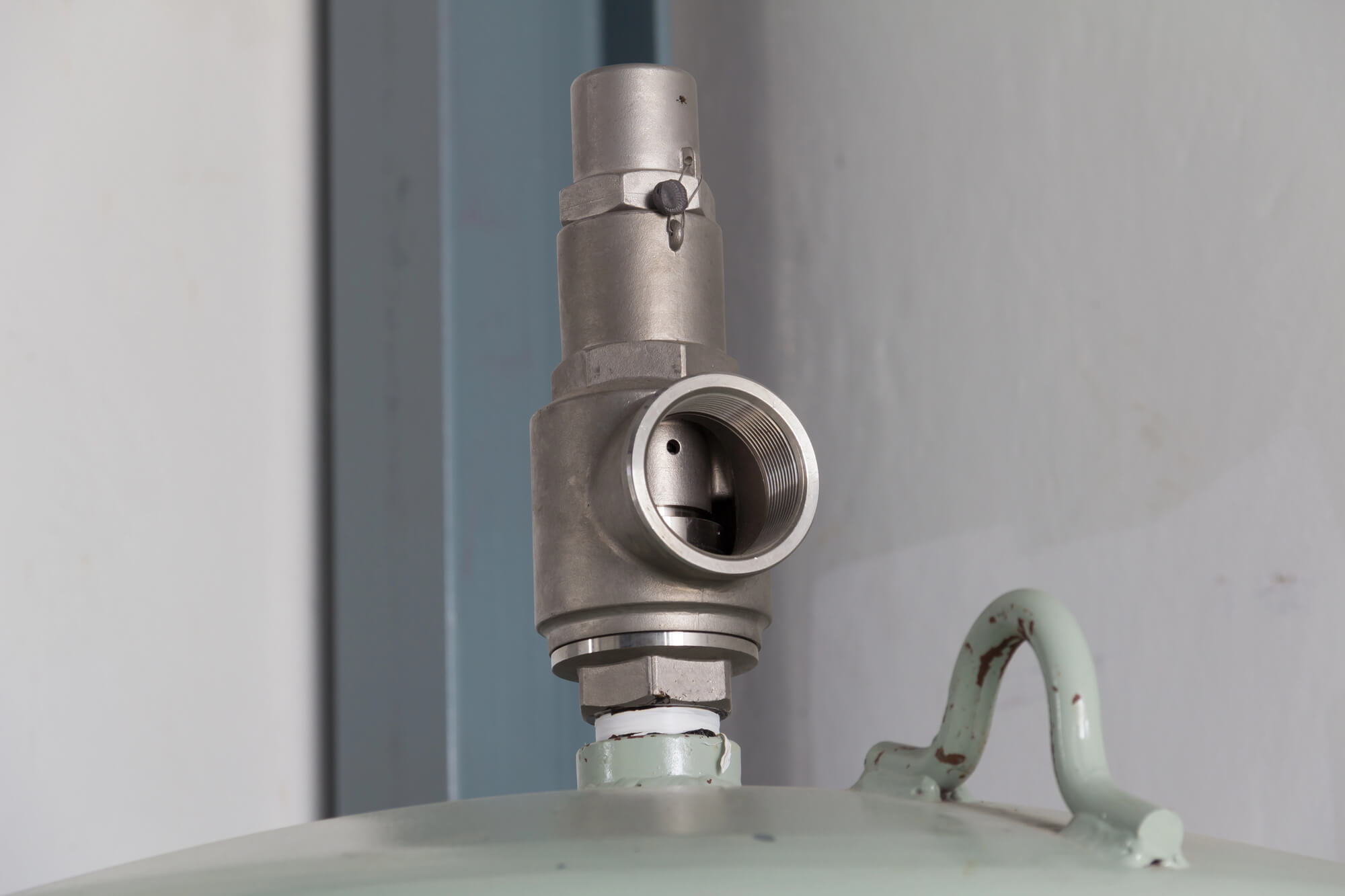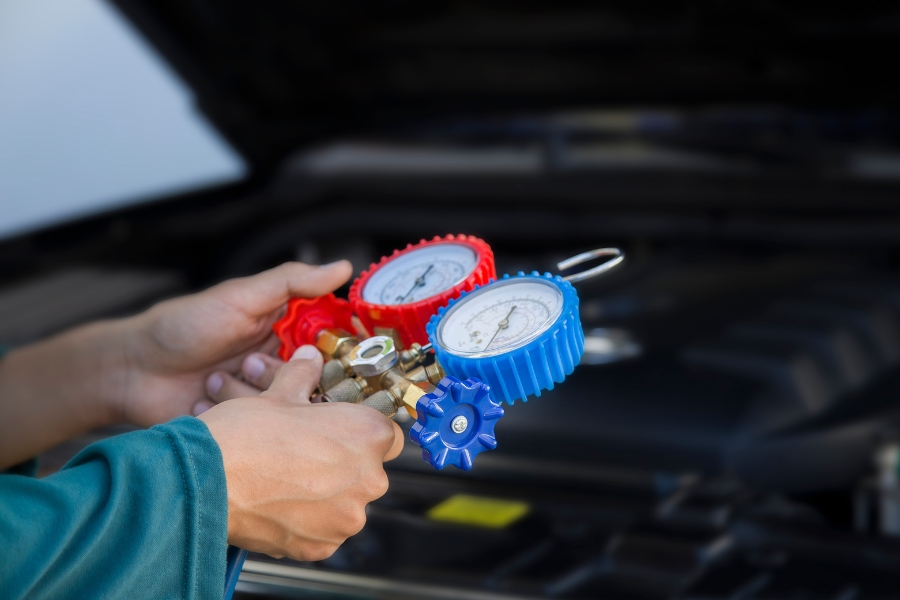A relief valve is a critical part of any air compressor system. It ensures that your system operates safely by releasing excess pressure. Without it, your system could face severe consequences.
Selecting the wrong air compressor pressure relief valve can lead to system failure and dangerous safety hazards. Imagine your air compressor system over-pressurising without a way to release that pressure. It could damage equipment or, worse, injure someone nearby. This makes the relief valve not just important but essential.
Understanding Relief Valves
An air compressor relief valve is a device designed to release air when the pressure inside the system exceeds a set limit. This limit is called the “set pressure.” When the pressure in the system reaches this set point, the valve opens. It allows the excess air to escape, preventing overpressure.
The primary purpose of a pressure relief valve on a compressor is to protect your system from excessive pressure. Overpressure can cause a range of problems. It can lead to burst pressure vessels or damaged components. These issues can be costly and dangerous.
Relief valves come in various types, each suited to different systems. Understanding how these valves work and what they do helps you make an informed choice. For instance, some valves are designed for high-flow situations, while others are suited for smaller systems with lower pressure needs.
By using the correct air compressor pressure release valve, you maintain your system’s safety and efficiency. It also ensures that your equipment runs smoothly and lasts longer. Always choose a valve that matches your system’s specifications and operating conditions. This way, you protect your investment and ensure safe operation.
Factors to Consider When Choosing a Relief Valve
Here are some of the most important factors to consider when researching air pressure relief valves:
Pressure Ratings
The pressure rating is crucial when choosing an air compressor pressure relief valve. The pressure rating tells you the maximum pressure the valve can handle. To find the right pressure setting for your system, check your air compressor’s maximum working pressure. The relief valve’s set pressure should be slightly higher than this but within safe limits. This ensures the valve opens before the pressure gets too high, protecting your system from excessive pressure.
Flow Capacity
Flow capacity is another key factor. It measures how much air the valve can release quickly. If the flow capacity is too low, the valve won’t release air fast enough, leading to pressure build-up. Compare the relief valve’s flow capacity with your compressor’s output. Ensure the valve can handle more than the maximum output of your compressor. This match is vital for maintaining pressure safety in your air compressor systems.
Material Compatibility
Relief valves come in different materials, like brass, stainless steel, and aluminium. The right material depends on your working environment. Choose stainless steel for corrosive environments. It resists rust and corrosion. If your system operates at high temperatures, ensure the material can withstand the heat. Using the wrong material can lead to valve failure and system damage.
Valve Type
There are several types of air compressor release valves. The most common are spring-loaded and pilot-operated valves. Spring-loaded valves are simple and reliable. They are ideal for most general applications. Pilot-operated valves are more complex but offer precise control. They are better for systems with varying pressure needs. Choose the type that best fits your system’s requirements.
Certification and Standards
Always check if the air compressor relief valve meets industry standards and certifications. These certifications ensure the valve has been tested for safety and performance. Look for valves that comply with ASME (American Society of Mechanical Engineers) standards. Using certified valves ensures reliability and adherence to pressure safety guidelines.
Please confirm with the original manufacturer how often the relief valve needs to be recertified, ensure certification is kept on file.
Installation Considerations
Proper installation is critical for optimal performance and safety. Install the valve in a location where it can easily release air without obstruction. Ensure the valve is accessible for maintenance and inspection. Follow the manufacturer’s instructions carefully. Incorrect installation can lead to malfunction and safety risks.
Common Mistakes to Avoid
By paying attention to these factors and avoiding common mistakes, you can ensure your air compressor systems run safely and efficiently. Making informed choices about your air compressor pressure relief valve helps maintain system integrity and safety.
Incorrect Pressure Settings
One common mistake is setting the relief valve pressure too high or too low. If set too high, the valve won’t open in time to prevent overpressure. If set too low, the valve will open too often, leading to unnecessary wear and tear. Always set the valve according to the system’s maximum working pressure.
Ignoring Flow Capacity
Another frequent error is neglecting the flow capacity. A valve with insufficient flow capacity can’t release pressure quickly enough. This oversight can cause excessive pressure build-up, risking damage to your pressure vessels and system components. Ensure the flow capacity matches or exceeds the compressor’s output.
Choosing the Wrong Material
Using a relief valve made from the wrong material for your environment can lead to early failure. For example, using a brass valve in a corrosive environment will cause it to degrade quickly. Always consider the working conditions when selecting the valve material.
Overlooking Certification
Not checking for proper certification and standards compliance is a serious mistake. Non-certified valves might not perform reliably, posing safety hazards. Always use valves that meet industry standards like ASME.
Improper Installation
Incorrect installation can impair the valve’s function. Ensure the valve is placed correctly, with no obstructions to airflow. Follow installation guidelines meticulously to avoid issues.
Top Takeaways
Choosing the right air compressor pressure relief valve is crucial for your system’s safety and efficiency. Always consider factors like pressure ratings, flow capacity, material compatibility, valve type, and proper installation. To ensure the best choice, consult with professionals or refer to the manufacturer’s guidelines. This way, you can protect your system from excessive pressure and maintain optimal performance.
Get the Right Air Compressor Valve
Need help choosing the right air compressor valve? Reach out to our experts at Express Australia for personalised advice. Explore our wide range of compressor valves to find the perfect fit for your system. Visit our Compressor Valves page now to learn more.






 Elgi B005700770006 Compressor Air Filter Equivalent
Elgi B005700770006 Compressor Air Filter Equivalent